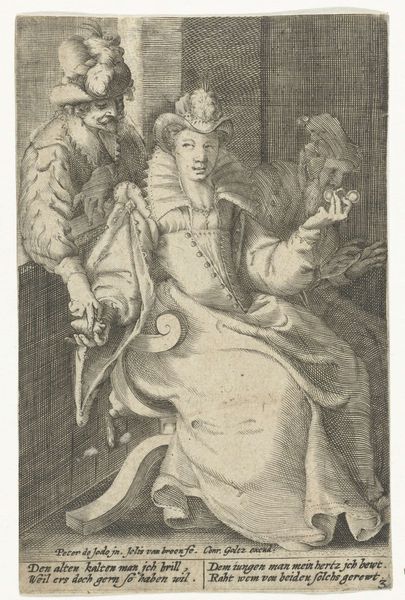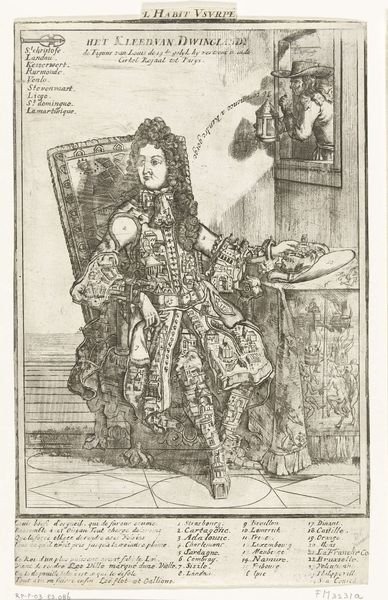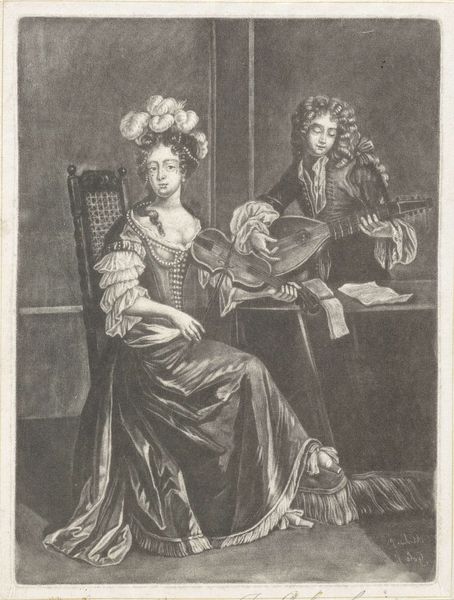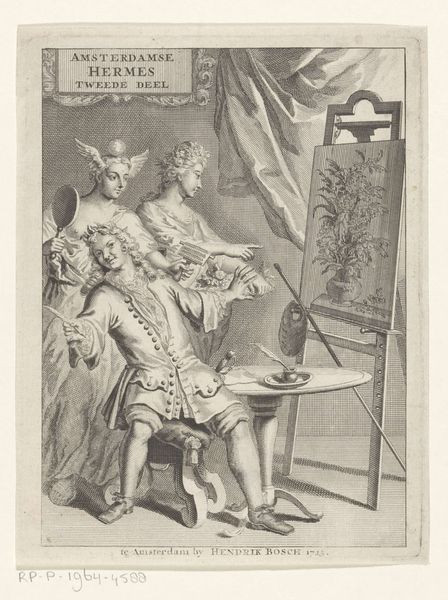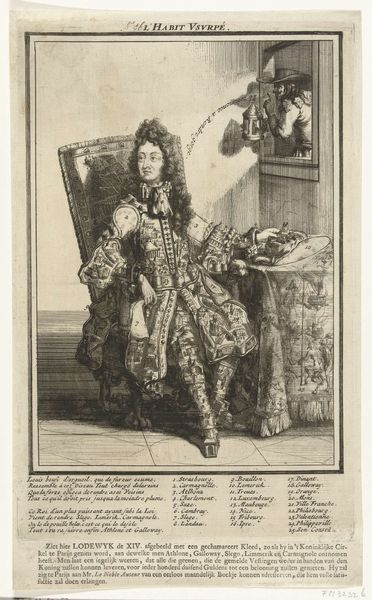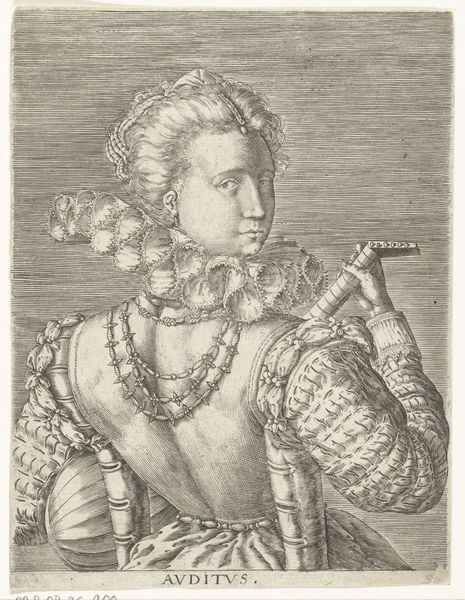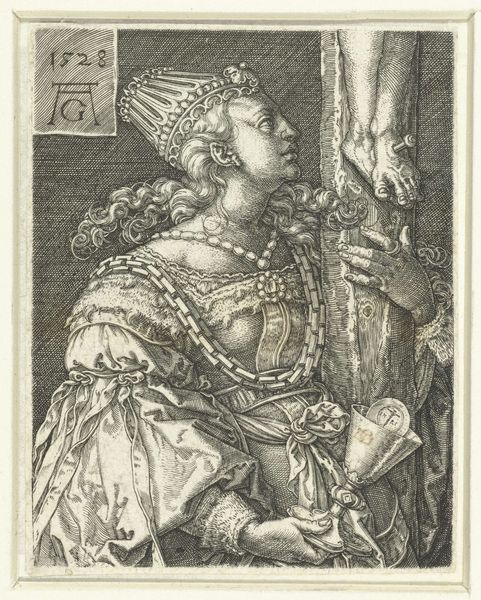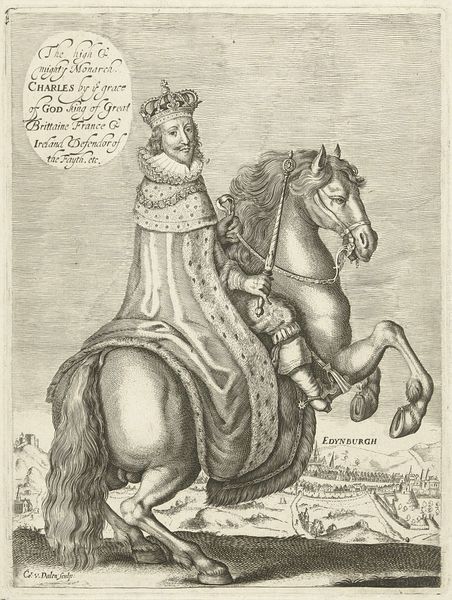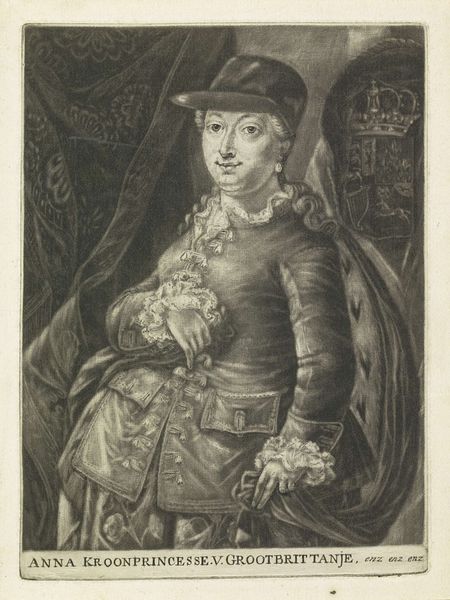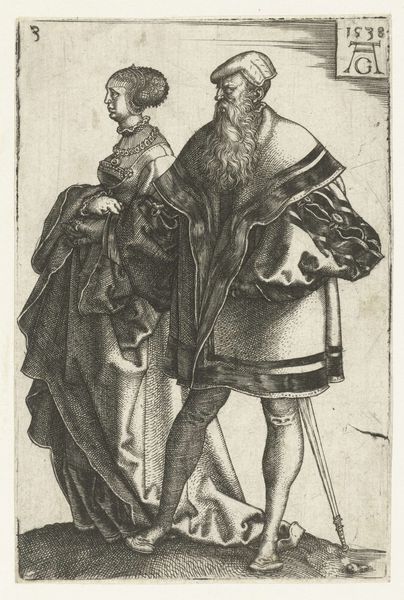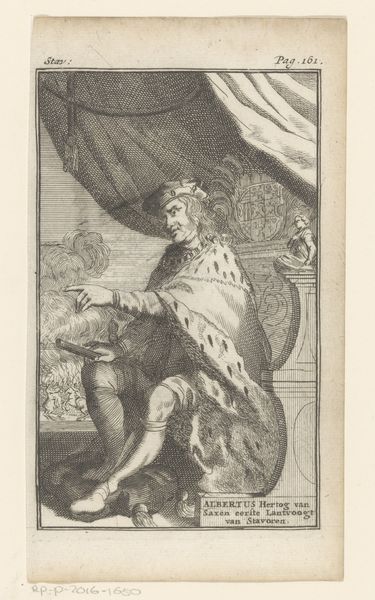
print, engraving
#
portrait
# print
#
old engraving style
#
mannerism
#
genre-painting
#
engraving
Dimensions: height 156 mm, width 102 mm
Copyright: Rijks Museum: Open Domain
Curator: The Rijksmuseum houses this intricate engraving by Gillis van Breen, made before 1596. It's entitled "Young Woman between a Young and an Old Man". Editor: Well, it certainly exudes a specific mood. There's a somewhat cynical air, a sense of weighing options and consequences, visually captured in the almost oppressive detailing of their garments. Curator: Indeed. The density of detail is quite remarkable, characteristic of mannerism. Observe how van Breen masterfully uses the engraving technique to create depth and texture. Notice the way light falls on the fabrics, especially the young woman’s dress, creating a complex visual rhythm. Editor: Right, there's something about the theatrical composition, typical of genre-painting, which reminds me how prints like this were used to circulate social commentary and moral lessons among a wider audience. What message do you suppose they were hoping to send with the juxtaposition of the figures? Curator: It certainly seems to touch on societal themes such as wealth and aging. Consider the juxtaposition of youth and old age, perhaps symbolising beauty versus experience. Semiotically speaking, there are many readings, all valid. Editor: It feels to me like a snapshot of an era grappling with class distinctions and gender roles. I keep wondering about that woman. How complicit or trapped is she? Her social environment at the time played a huge role in informing a print like this. Curator: Absolutely. Analyzing through a structuralist lens, the woman functions as the central figure mediating these opposing forces – the old and young men, representing tradition versus modernity, perhaps security versus passion. The material quality of the engraving lends a unique presence that speaks to issues that society still grapples with. Editor: It also feels that looking beyond that single figure shows an artwork created in and helping perpetuate a specific male-centered world, whether through its moral judgement or its portrayal of status and relationships. Curator: It's compelling how, through an examination of form and materials, we reveal something deeper about a bygone social and historical context. Editor: And by understanding the period's norms, the artist’s choices in composition take on new meanings for a modern observer.
Comments
No comments
Be the first to comment and join the conversation on the ultimate creative platform.
